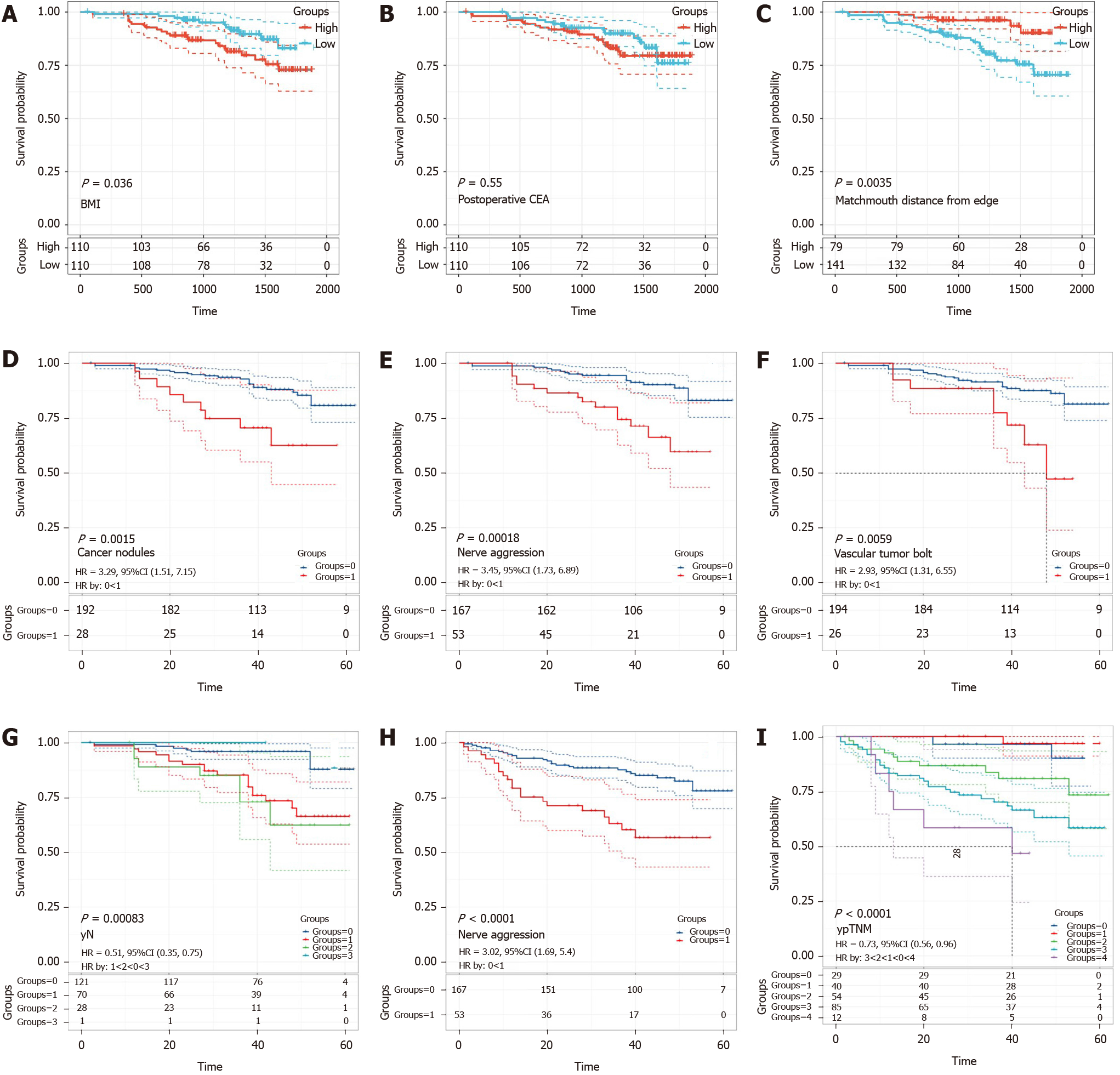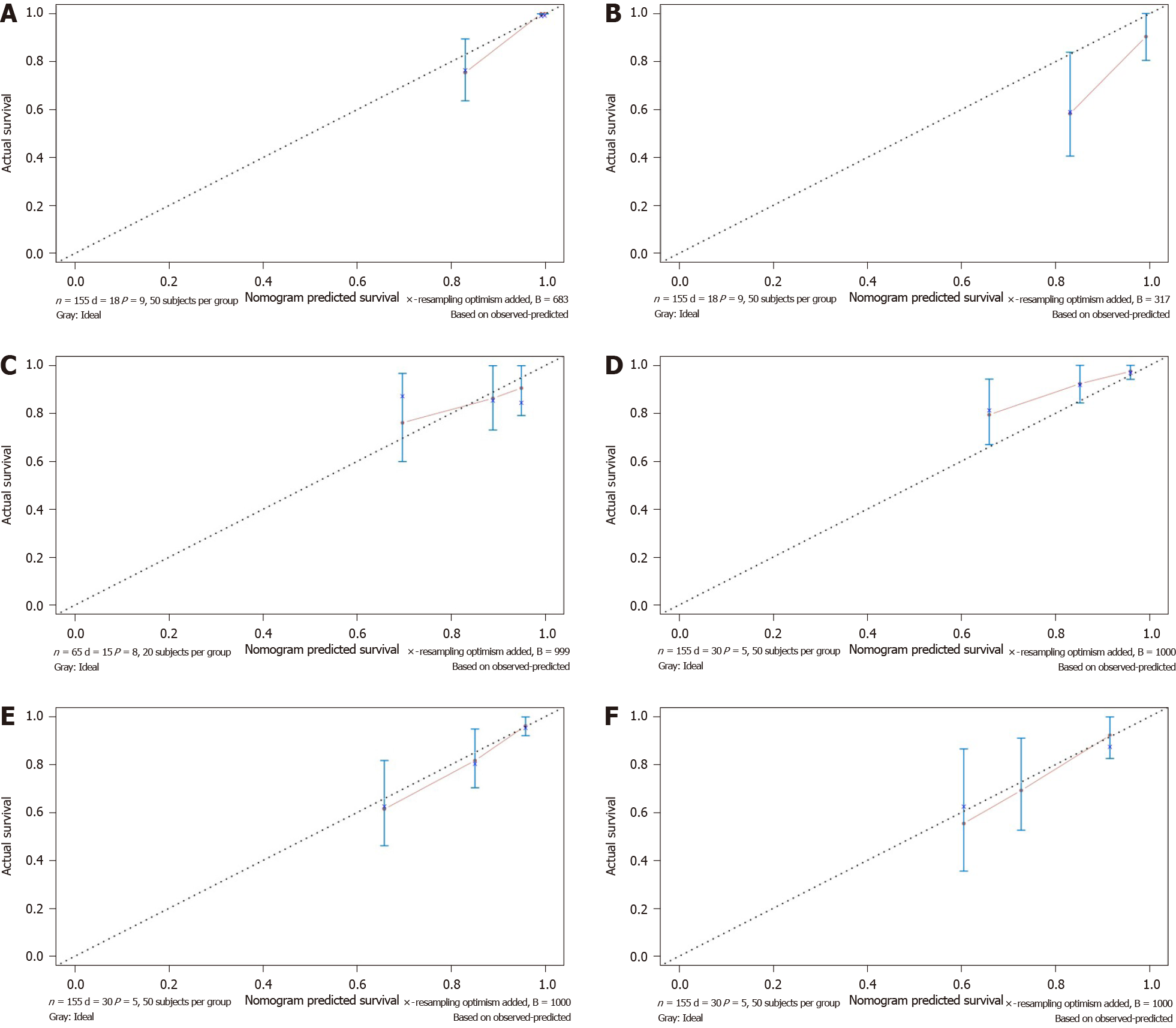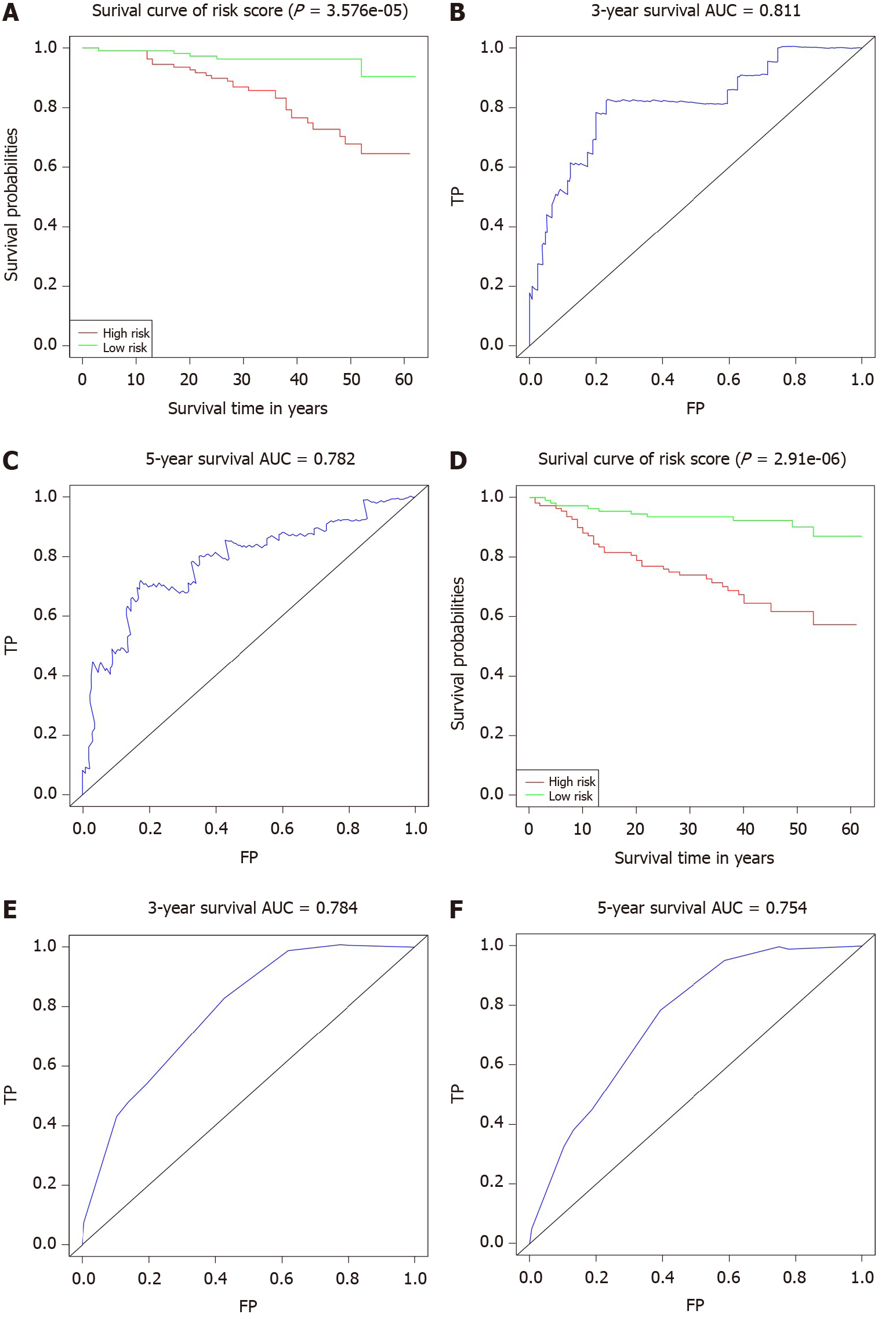Copyright
©The Author(s) 2020.
World J Gastroenterol. Nov 14, 2020; 26(42): 6638-6657
Published online Nov 14, 2020. doi: 10.3748/wjg.v26.i42.6638
Published online Nov 14, 2020. doi: 10.3748/wjg.v26.i42.6638
Figure 1 Analysis workflow in this study.
ROC: Receiver operating characteristic; OS: Overall survival; DFS: Disease-free survival; KM: Kaplan-Meier.
Figure 2 Selection of prognostic factors using the least absolute shrinkage and selection operator regression model.
A: A graph of the error rate of cross-validation; B: least absolute shrinkage and selection operator coefficient profiles of the 151 texture features.
Figure 3 Prognostic factor selection using the least absolute shrinkage and selection operator.
A: A graph of the error rate of cross-validation; B: Least absolute shrinkage and selection operator coefficient profiles of the 150 texture features.
Figure 4 Kaplan-Meier survival curves for the prognostic factors of overall survival and disease-free survival.
A-G: The prognostic factors for overall survival; H, I: The prognostic factors for disease-free survival. BMI: Body mass index; CEA: Carcinoembryonic antigen.
Figure 5 Survival nomogram.
A: The nomogram for overall survival was developed in the primary cohort with eight prognostic factors: recurrence, cancer nodules, yN, positive lymph node status, body mass index, matchmouth distance from the edge, distance from the margin after neoadjuvant therapy and postoperative carcinoembryonic antigen; B: The nomogram for disease-free survival was developed in the primary cohort with two prognostic factors: ypTNM and nerve aggression.
Figure 6 Calibration curve for predicting patient survival.
A: 3-year and B: 5-year overall survival (OS) rates in the primary cohort; C: 3-year OS rate in the validation cohort; D: 1-year and E: 3-year disease-free survival (DFS) rates in the primary cohort; F: 3-year DFS rate in the validation cohort.
Figure 7 Kaplan-Meier and receiver operating characteristic curve for the risk factor score prediction model.
A: Kaplan-Meier (K-M) overall survival (OS) curves for the low-risk and high-risk groups; B: Receiver operating characteristic (ROC) curves for the 3-year and C: 5-year OS rates of locally advanced rectal cancer (LARC); D: K-M disease-free survival (DFS) curves for the low-risk and high-risk groups; E: ROC curves for the 3-year and F: 5-year DFS rates of LARC.
- Citation: Wei FZ, Mei SW, Chen JN, Wang ZJ, Shen HY, Li J, Zhao FQ, Liu Z, Liu Q. Nomograms and risk score models for predicting survival in rectal cancer patients with neoadjuvant therapy. World J Gastroenterol 2020; 26(42): 6638-6657
- URL: https://www.wjgnet.com/1007-9327/full/v26/i42/6638.htm
- DOI: https://dx.doi.org/10.3748/wjg.v26.i42.6638















